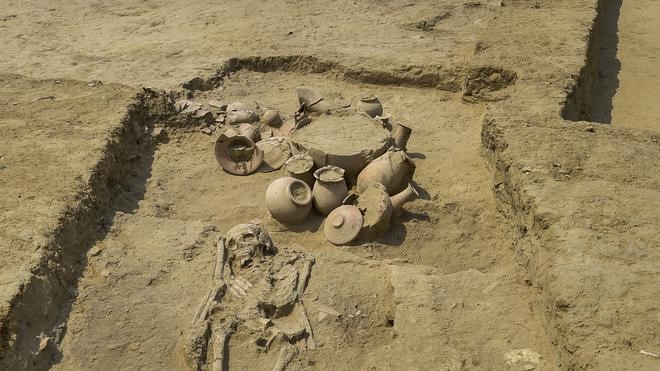
Rakhigarhi

09.04.2024
Rakhigarhi
|
For Prelims:About Rakhigarhi,Excavation of Rakhigarhi , Important points |
Why in the news?
Recently the National Council of Educational Research and Training has introduced some amendments in the history curriculum for class 12 students, highlighting that the Harappans lived in Rakhigarhi.
Important points:
- NCERT has cited certain "archaeological findings" that clearly demand "improvements" in the Class 12 history book chapter - Bricks, Pearls and Bones - Harappan Civilization.
- The current amendments in the textbook will be made for the academic year 2024-25.
- NCERT claimed that the findings also showed that "the Harappans followed a democratic system
- The DNA of the Harappans persists to this day and the majority of the South Asian population appears to be their descendants.
- It removed references to how the Narmada Dam Project had adversely affected tribals and led to displacement, leading to greater poverty.
About Rakhigarhi:
- Rakhigarhi is an Indus Valley site in Hisar, Haryana. Rakhigarhi is a combination of two words, Rakhi and Garhi.
- Rakhigarhi is an important historical place located in the dry region of Saraswati and Drishadvati rivers in Hisar district of Haryana.
- Rakhigarhi is the second largest historical city of the Indus Valley Civilization in the Indian regions after Dholavira.
- Archaeologists discovered Rakhigarhi located in Haryana in 1963 AD.
- Rakhigarhi was excavated on a large scale during 1997-1999 AD by Amarendra Nath.
- Evidence of both the periods of Pre-Harappan and Mature Harappan era has been found from Rakhigarhi.
- Rakhigarhi is also said to be the largest site of the pre-Harappan period.
- Rakhigarhi is situated in the plains of the Saraswati River, about 27 km away from the seasonal Ghaggar River.
- The site shows continuity from the Harappan era to the present day.
- It is recognized for its extensive Harappan heritage, which provides insights into ancient urban life and culture.
- Excavations were carried out at Rakhigarhi to study its development from 6000 BCE (Pre-Harappan phase) to 2500 BCE.
- To study the genetic history of the Harappans, DNA was extracted from skeletal remains excavated at Rakhigarhi.
- The NCERT reference to the archaeological findings at the Rakhigarhi site also shows that the Harappans were in the Haryana site even before the migration of the Aryans.
- The main river of Rakhigarhi is Ghaggar.
- Rakhigarhi, one of the world's largest and oldest Indus Valley Civilization sites, has reached the verge of extinction due to the boom of rapid economic development.
Excavation of Rakhigarhi:
- A small coin inscribed with the Mother Goddess was found here.
- Important monuments and antiquities have been found from Rakhigarhi, in which fort-walls, granaries, pillared galleries or pavilions, with chambers built on the sides, fire altars built on high platforms, etc.
Source: The Hindu